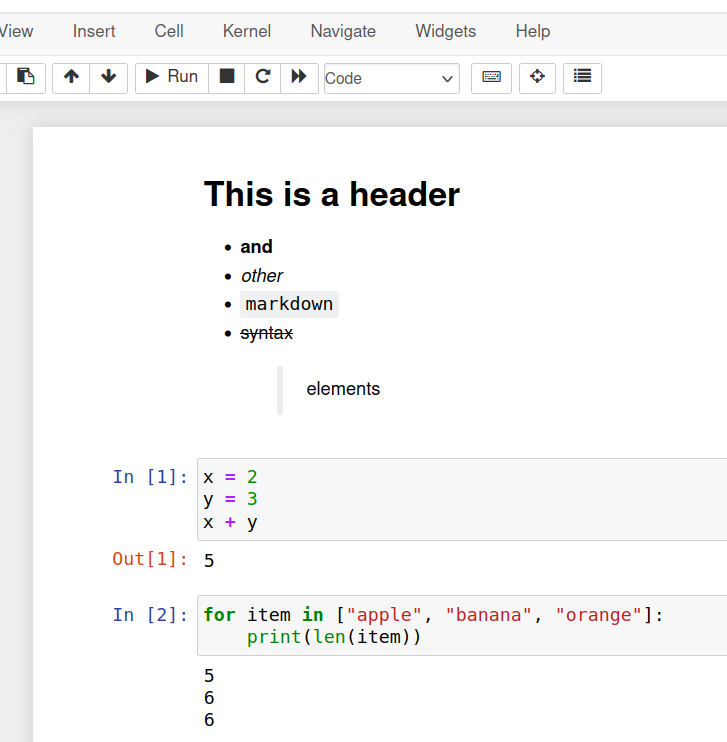The most common way of writing Python code is using .py files. An alternative to .py are so called “notebooks” (extended with .ipynb) . They are not only another file format, but most of all a different philosophy of writing (not only) Python code.
What is a notebook?
A notebook (.ipynb file) is actually a JSON file which contains Python code (and/or Markdown text) organized in so called “cells”. When you open the file in an editor that supportsthe .ipynb format you’ll see something like this:
After running a single code cell, it is sent to the IPython kernel and executed.
Editors with notebook support
- Jupyter Notebook
- Jupyter Lab
- Google Colab
- PyCharm (read only in the free version)
- Visual Studio Code
and more.
Many .ipynb editors (especially when they use cloud) work in a browser.
Notebook key features
- code and text support
- each cell of code (or Markdown text) can be run separately
- order of cells doesn’t matter, order of running them does
- keyboard shortcuts for actions like: adding and deleting cells, navigating through the notebook, executing code
Applications
Jupyter Notebook isn’t a universal code editor. It’s not well-suited for writing production code. However, there are numerous use cases where Jupyter proves to be a valuable tool, such as:
- prototyping
- experiments
- data analysis
- education
Keyboard shortcuts
When you escape the cell (by pressing Esc, of course), you switch it to command mode. Now you can use a number of keyboard shortcuts which allow you to perform various operations on the cell, e.g.:
- creating a new cell above (
a) or below (b) - deleting a cell (double
d) - moving between cells (arrow up ↑, arrow down ↓)
- executing a cell (
Shift + Enter/Ctrl + Enter/Alt + Enter)
If you want to enter the cell again (switch to edit mode) – press Enter.
